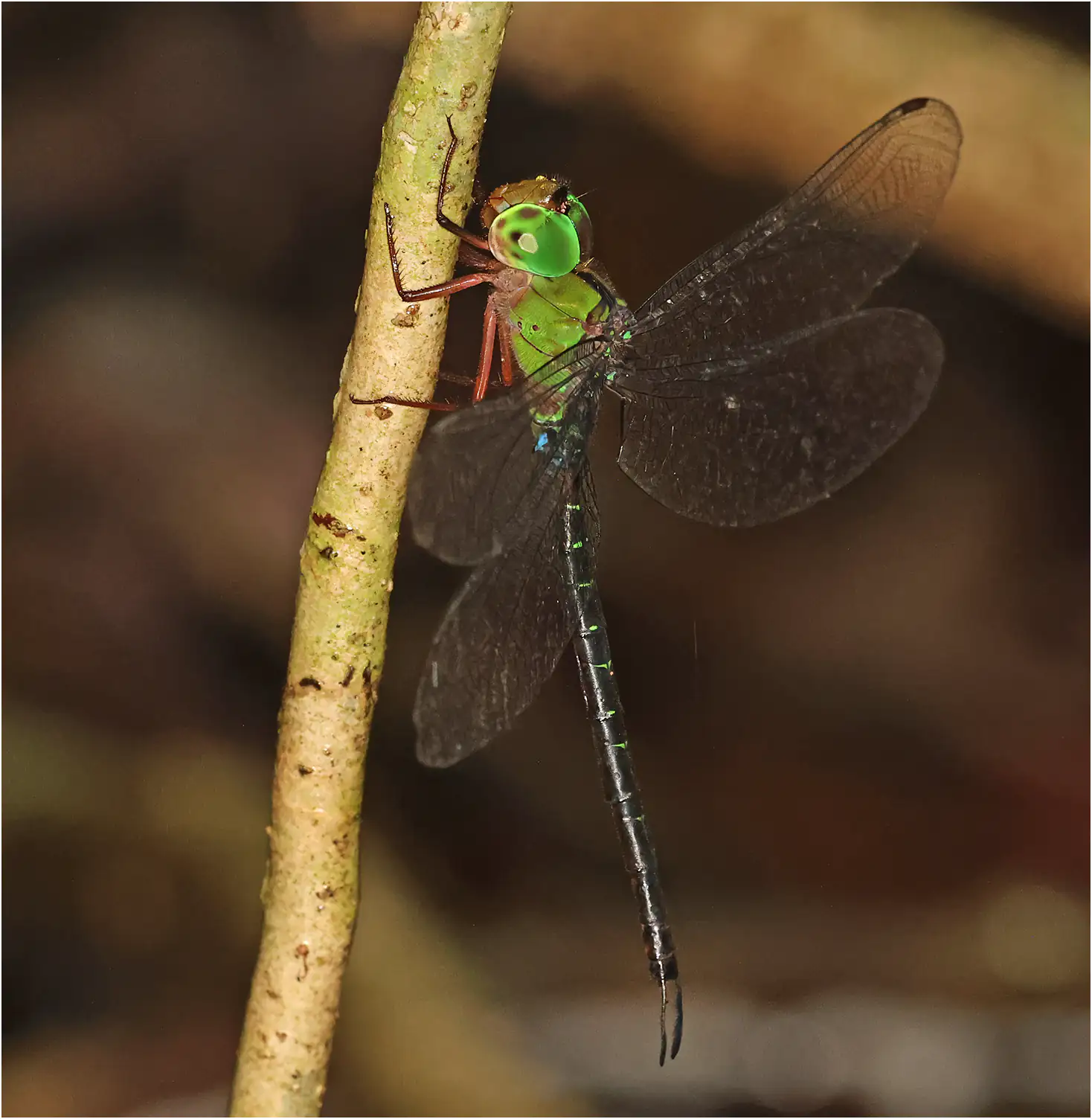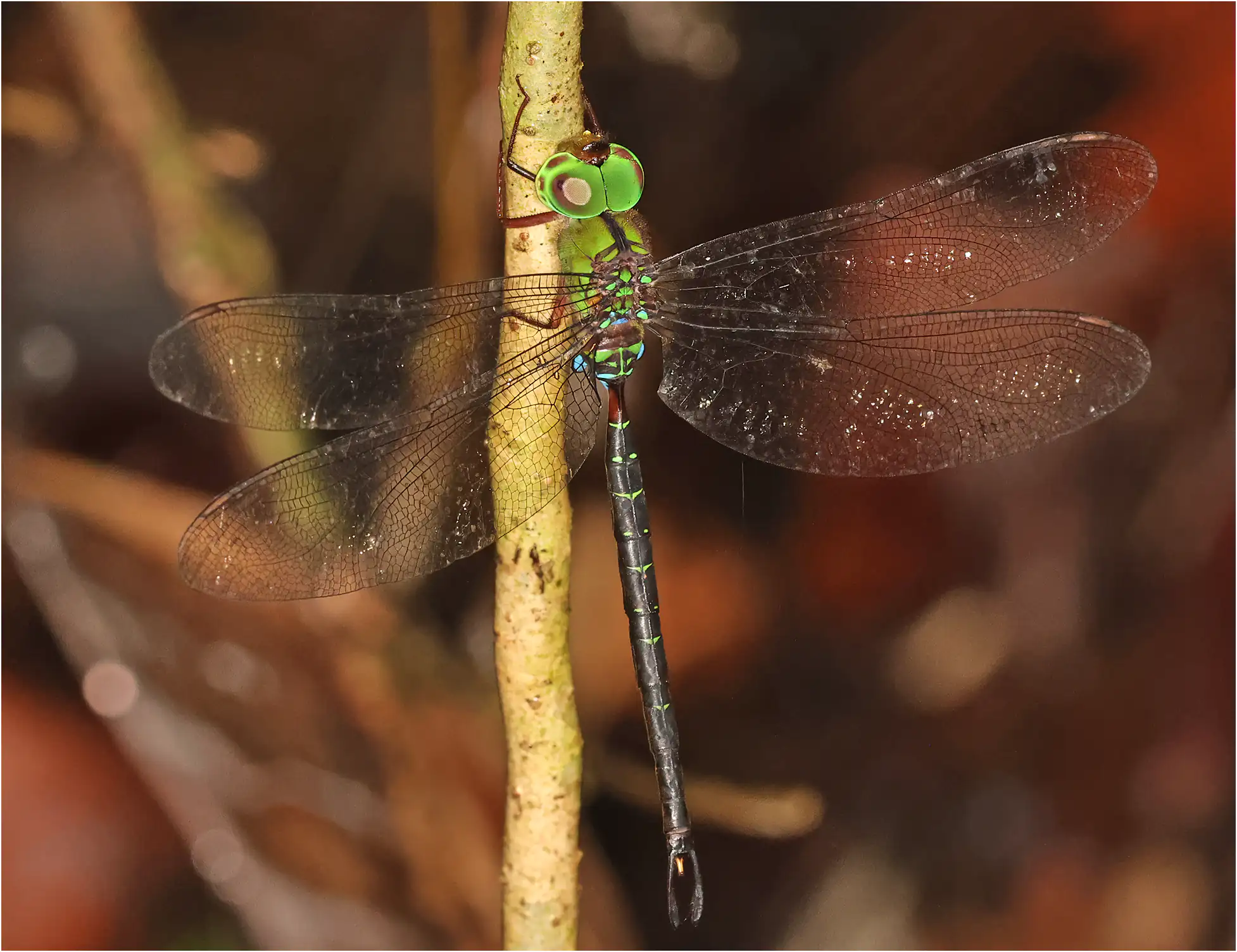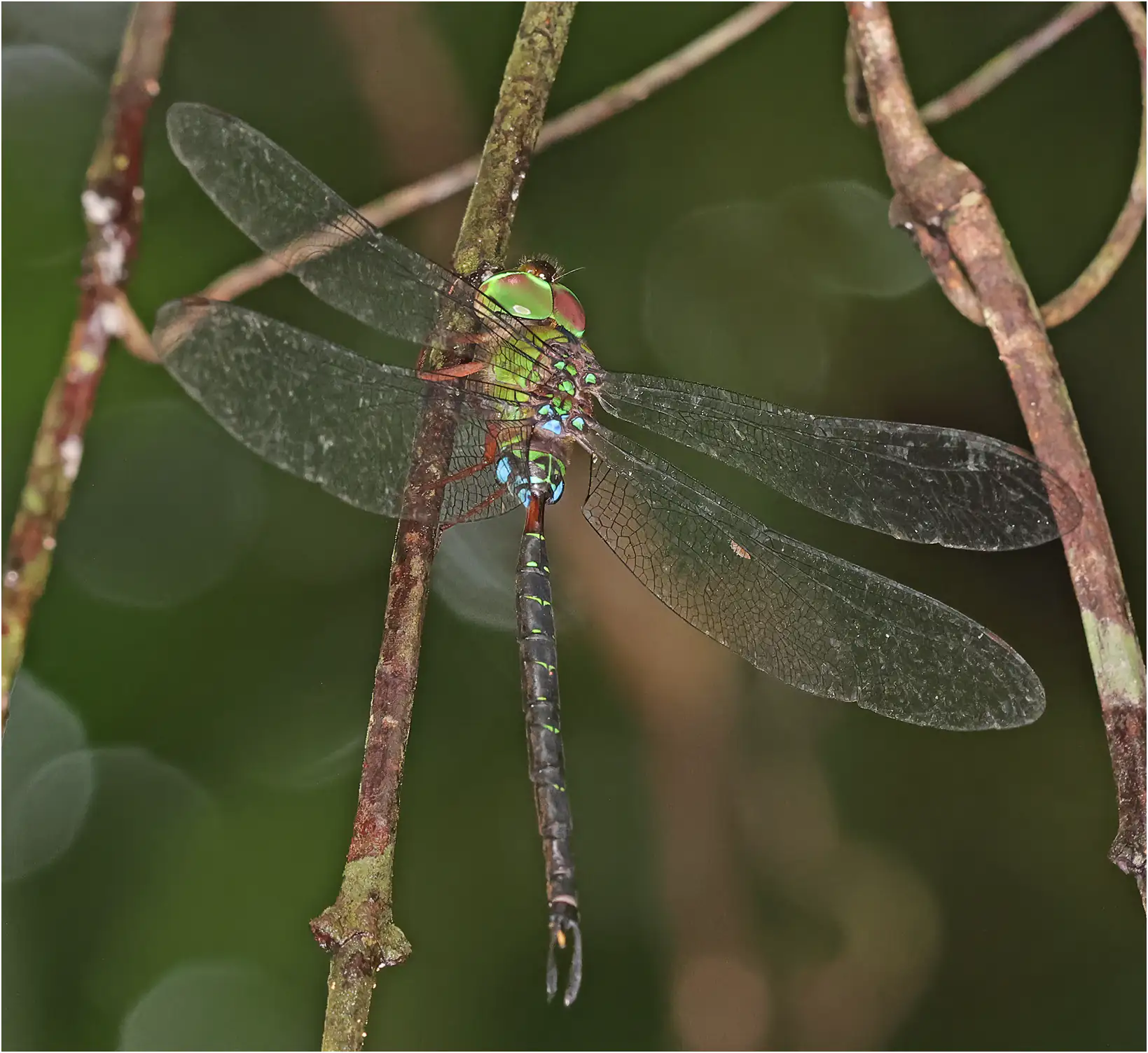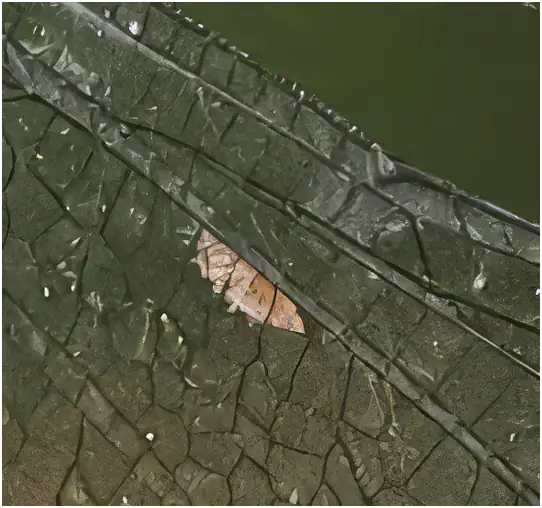
From the very first morning of prospecting, it was a pleasure to encounter Gynacantha maclachlani male (1), a large Aeshnidae. In the Sama Jaya reserve, in the city of Kuching, I moved away from the group to find some peace and quiet… and having a few dozen seconds to scan the darkness in front of me, I was surprised to discover this superb male.

We are in a swampy part of fairly dense forest, and it is very dark, we are preparing to shelter from the scattered rain which will turn into downpours and flood the meadows.
It is part of what English speakers call Duskhawker, that is to say that they are mainly active at dusk and, during the day, they hang quite low, clinging to a branch in dense forest.
Its size must be very close to that of G. dohrni, 62 to 66 mm (2) with an abdomen of 43 to 45 mm and especially very long upper anal appendages, 6.5 mm specifies Krüger in his description (1).
It is only found in Borneo and Sumatra.
IUCN Red List

Note the blue auricles on the second segment, and the way the third is constricted…
I must admit that this specimen was first identified as Gynacantha dohrni, of which there are many photos on the web. These are the first published of Gynacantha maclachlani, at least on iNaturalist.
The distinction is made mainly by the upper anal appendages, those of G. dohrni bearing a tooth at their base, which is absent here. Its 3rd segment would perhaps be even thinner than that of G. dohrni.

On its right hindwing, we can observe a parasitic dipteran, perhaps of the genus Forcipomyia.

Etymology
The term Gynacantha (2) was created by Rambur from two Greek words: Gyna for female and canta for thorn, because the females of this genus have 2 thorns under the 10th segment.
Maclachlani (3) is a tribute by Leopold Krüger to Robert Mc Lachlan (1837-1904), one of the main English odonatologists of that time, for his help in the classification of Gynacantha.
1- Krüger, L. (1898). Die Odonaten von Sumatra. II. Theil. Familie Aeschniden. Entomologische Zeitung, 59, 267–331. P. 280-281.
2- The Naming of Australia’s Dragonflies, Ian Endersby & Heinrich Fliedner, Busybird publishing
3- Heinrich Fliedner, 2021 – The scientific names of Krüger’s odonate taxa with annotations about his contribution to neuropterological taxonomy – International Dragonfly Fund